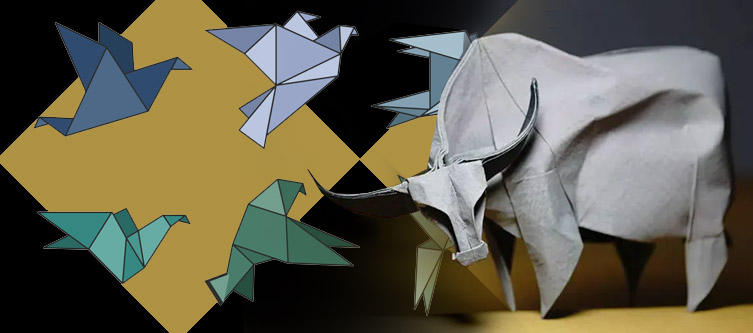Paper sculptures are amazing pieces of art. They can easily make an individual believe that they’re full-form sculptures created out of solid and heavy materials. It is only when you get close to them that you realize that they’re made of paper.
Many artists use papers meant for acrylic or watercolour paintings to create two-dimensional and three-dimensional sculptures. The best medium is believed to be acid-free paper. Making these wonderful pieces of art involves several techniques. Here are the most popular ones:
1. Sculpture Folding
Paper sculpture artists utilize a variety of folds to make a fabulous sculpture. The sculpture folding techniques also include origami. This paper-folding art from Japan incorporates a series of different folds. Pleats, mountain, reverse, and squash folds are some of the basic folds used in origami. Petal and triangle folds are also used in this Japanese paper-folding art.
2. Curls and Spirals
For creating spirals and curls, solid square boxes, round objects, edges of tables, and scissors are used by sculptors. There’s a brilliant technique that sculptors employ for creating a soft S-curve using paper. It involves tugging a piece of paper gently along one of the edges of a wooden block. Some tension is also applied on the opposite end for getting the desired result.
In order to cut a spiral, you must begin at one end of a circle cut-out. Then you can go ahead and cut into the circle. While doing so, you must follow the curve of the paper until you arrive at the centre. Cones and cylinder shapes are created by the paper sculptors using rolling techniques.
3. Razor and Scissor Cuts
Sculptors who work on relief paper use a cutting stylus. It has pointed, tipped, or rounded razor blades that are interchangeable and fit into the end of the tool. Although scissors are also used, the razor-bladed tool gives the sculptor more control.
This is extremely useful when creating cuts that are intricate and snowflake-like. After the overall design, smaller pieces are cut, moistened, and moulded into specific shapes. They’re then held together in place using acid-free glue.
4. Embossing and Molding
Anything that creates an impression into a sheet of paper is used by paper sculpture artists. Wood blocks, textured fabrics, found objects, and elements of nature are some examples. A paper sculpture artist uses an excellent method to create recessed, raised, or textured areas in the sculpture. First, the paper is moistened and then some pressure is applied to the item on the paper.
This is done while it’s sandwiched between two pieces of felt. Heavier and thicker watercolour papers are ideal for this. In another embossing method, the wet paper is dried around the item that’s moulded. Thicker papers are used to create more vivid results.
5. Tools, Accessories, and Scoring
Small, flat, oil paint brushes are also used by paper relief sculptors to put on glue where it’s needed. This is done to attach parts of the sculpture to itself. Pencils are used for drawing out designs or for curling. The wooden or metal stylus is used to score paper to make an indentation.
Rounded shapes are created by safety compasses and a small ruler is used for measurements. Techniques for glueing involve holding the glued piece stationary for a minimum of 30 seconds. This is done until the white glue bonds properly.


